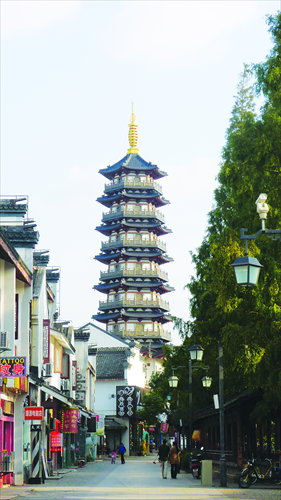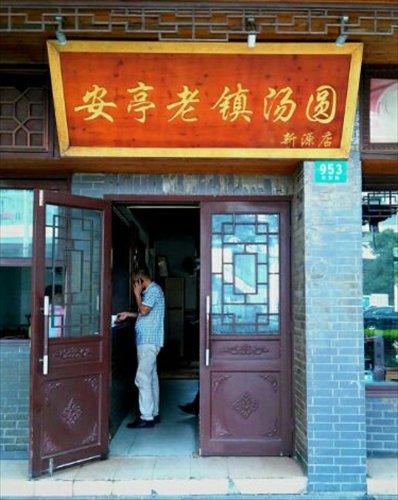Anting Station
Experience the winding streets, arched bridges and pagodas of ancient China
Editor's Note
This year is the 21st anniversary of the opening of the Shanghai metro. The subway has facilitated more than 13 billion journeys during its 21 years, and half of Shanghai citizens cite the metro as their favored mode of transport. To commemorate the anniversary, each week the Global Times will take an in-depth look at one metro station and its surroundings. In the case of downtown stations, we will focus on points of interest within walking distance; while for suburban areas, we will cast our net a little wider.
Anting Station is at the northern end of Metro line 11, in Anting town in Jiading district, northwestern Shanghai. The Global Times recently paid a visit to chart some of the must-see destinations around the station where tradition meets with modern.

Anting Old Street
Anting Old Street in Anting town is about one kilometer from the station. The Chinese character an indicates stability and peace while ting means pavilion. The name of the street comes from an old saying, derived from the large number of pavilions that can be encountered on the street: "Every 10 li (500 meters) can be found a pavilion, and every pavilion is named an."
Anting Old Street exemplifies the style of winding paths and arched bridges of classical Chinese architecture from both the Ming (1368-1644) and the Qing (1644-1911) dynasties. The street winds along Antingjing River.
Along both sides of the river are stores where jade and calligraphy scrolls can be bought. Wang Shi, a customer at a calligraphy shop who was asking for tips on choosing writing brushes, said, "Shops on both sides of the river are worth visiting as they are located in much less modern and less crowded places."

Anting Old Street exemplifies the style of winding paths and arched bridges of classical Chinese architecture. Photos: CFP and Fang Shaoqing/GT
Puti (Bodhi) Temple
Puti Temple (1138 Hejing Road) is on Hejing Road, near the northern end of Anting Old Street. Originally built in the Spring and Autumn period (770BC-476BC), Puti Temple is one of the oldest temples in Shanghai. Puti is a transliteration of the Sanskrit word "bodhi," meaning enlightenment or awakening.
Since it was established, Puti Temple has drawn worshippers to the area, many of whom settled nearby, helping to build up the population of Anting town.
There are many stories surrounding the history of the temple. In the Ming Dynasty, a monk called Haiyue from Hangzhou was upset about damage that had recently been inflicted upon the temple. The hall had collapsed and the Buddha statues were damaged. He promised to restore them. To show his determination, he cast an iron chain that weighed around 50 kilograms and locked it around his neck, leaving the key to the chain in an old well in Puti Temple.
He vowed not to unlock the iron chain until the new hall was completed. Five years passed before Haiyue finished the reconstruction of the hall and Buddha statues. The local residents then unlocked the chain around Haiyue's neck and elected him head of the temple.

Anting sweet dumplings
Several shops in Anting Old Street offer traditional Anting sweet dumplings. In addition to traditional red bean paste, sesame and pumpkin, Anting sweet dumplings can feature salty flavors such as meat. "Sweet dumplings with meat and date paste stuffing are good. The pastry is glutinous," said a customer named Gao at a sweet dumpling restaurant called Anting Laozhen Sweet Dumplings (953 Xinyuan Road). He also recommended rice dumplings in sweet rice wine.
In another shop called Anting Laojie Sweet Dumplings (300 Moyu Road), Xie Mingming, a regular customer who lives nearby, said, "I like the sesame flavor most. It best represents traditional Anting and Chinese desserts." Dumplings usually cost around 10 yuan ($1.64) per bowl.

Zhuyun Museum
Zhuyun Museum is located on Xinyuan Road. It contains bamboo carvings, paintings, works of calligraphy and literature by artists and intellectuals based in Jiading during Ming and Qing dynasties.
The museum has more than 200 pieces on display. Some of the bamboo carvings are being exhibited for the first time after being bought back from overseas museums and collectors. Some of the items rival those of national museums, such as an embossed pen holder from the Qing Dynasty.